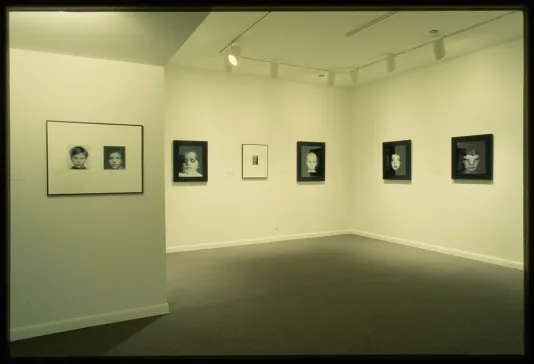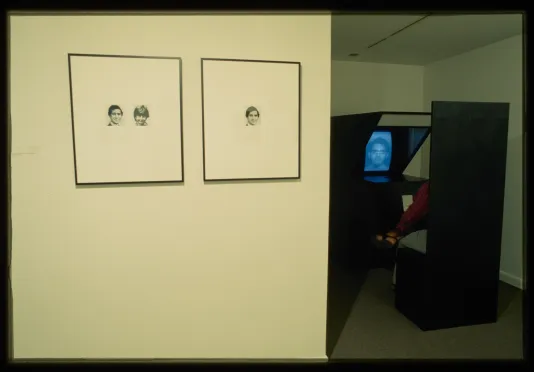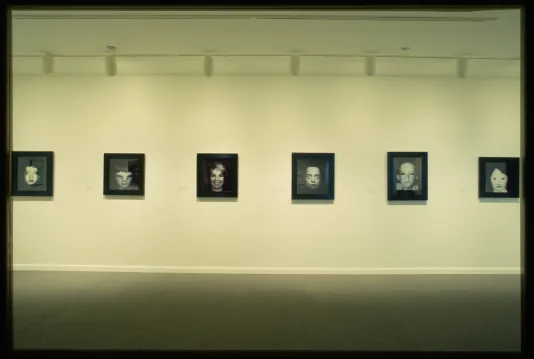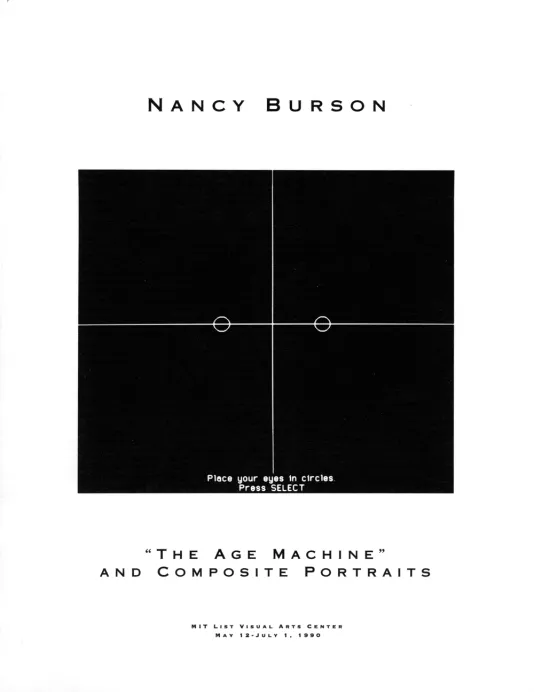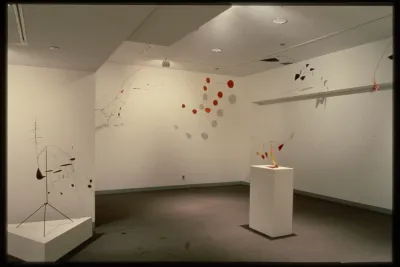Installation view, Nancy Burson: The Age Machine and Composite Portraits, MIT List Visual Arts Center, 1990.
Nancy Burson: The Age Machine and Composite Portraits
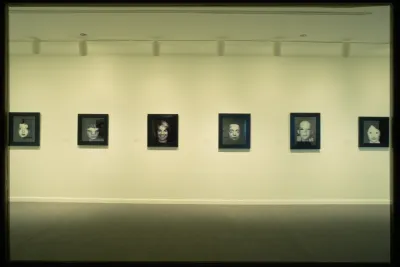
This exhibition is part of the MIT List Visual Arts Center’s celebration of the 151st anniversary of photography.
Nancy Burson’s latest interactive video project, The Age Machine and Composite Portraits, allows intrepid viewers to face the future as they preview their face as it might appear twenty-five years down the road. Operation is quite simple: one sits in the console and scans a video image of one’s face onto the screen, delineates the key points of one’s features, and indicates one’s present age. In a few seconds, The Age Machine produces a speculative portrait drawing upon the typical aging effects stored in the database.
Fifteen of the artist’s provocative computer-assisted portraits, which age or combine the features and facial structures of two or more individuals, will also be on view. Examples include the Royal Family in 2010, Mankind (a contemporary generic world portrait), and more mysteriously compelling fictitious faces such as a bald plaster mannequin with human eyes and mouth, or children with unusually formed faces.
In the exhibition catalogue, curator Dana Friis-Hansen writes: “Photography is a strange mirror in the hands of Nancy Burson, who pushes the parameters of portrait photography generations further with eerie computer-assisted portraits and interactive video projects. Whether she is picturing prehistory, as in Evolution II (1984), a composite merging a chimpanzee and a man, or allowing us to look into the future with The Age Machine, Burson’s poetic and visionary projects provoke both wonder and deep thought, often posing unsettling questions about photography, history, and identity. Plotting gut instincts about the self and human nature against the mechanics and metaphors of technology, she deftly transcends the “average” and “normal” necessary for the technology to function so that she can use it to make us conscious of, and, one hopes, tolerant about issues of difference, the self, and aging. The products of her system encourage an incalculable range of emotional and visceral – but essentiallyhuman, responses.
Publication available. 12-page exhibition catalogue.
Sponsors
This exhibition is supported in part by the MIT Council for the Arts.
